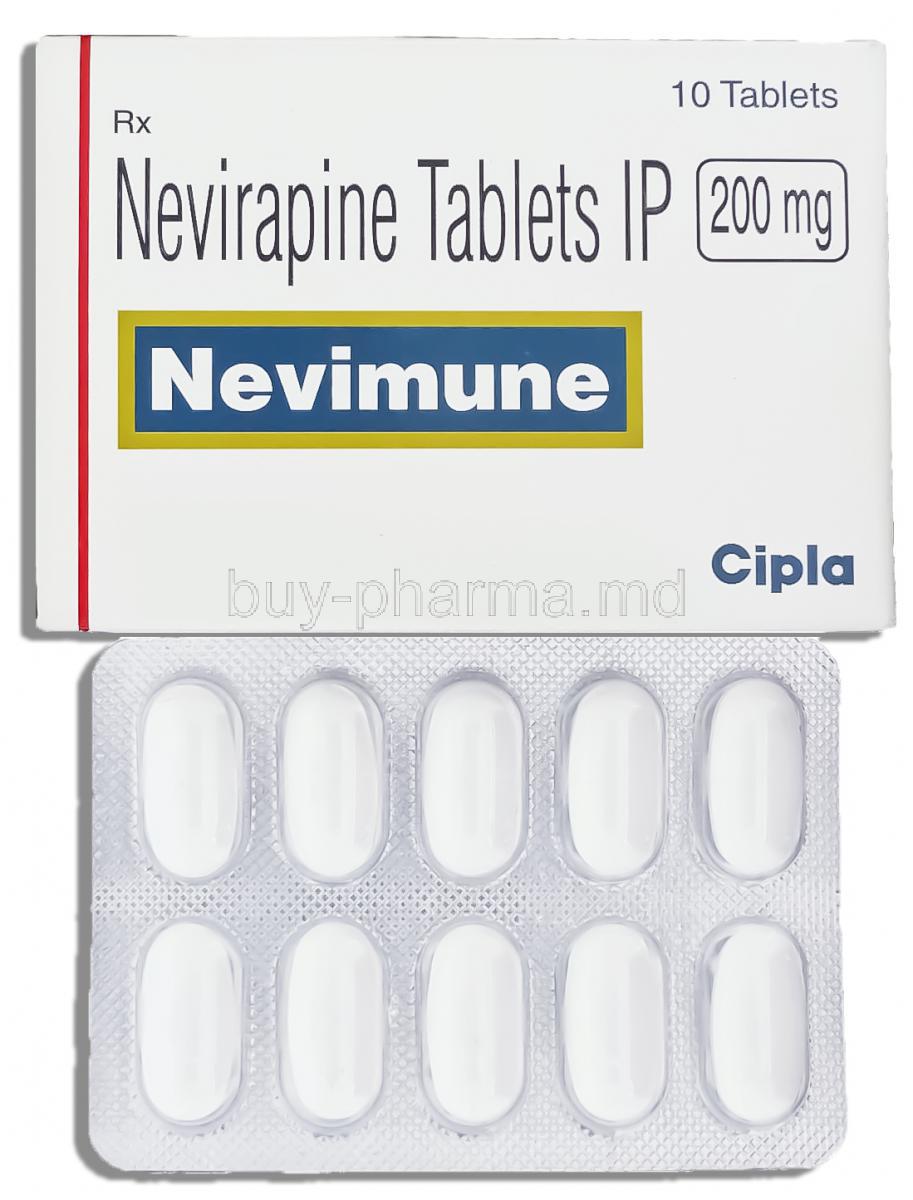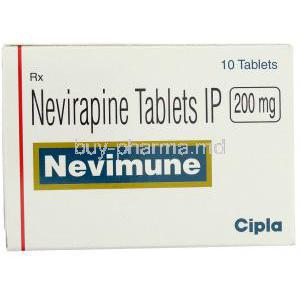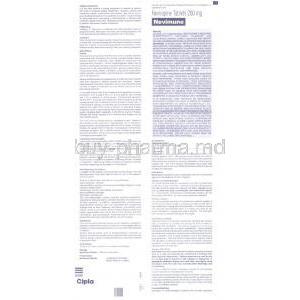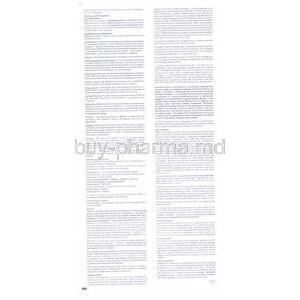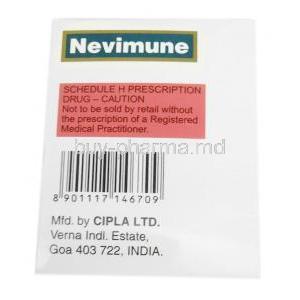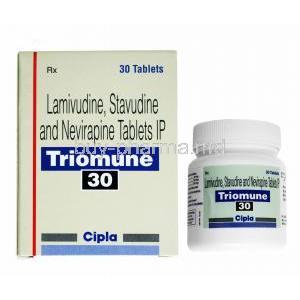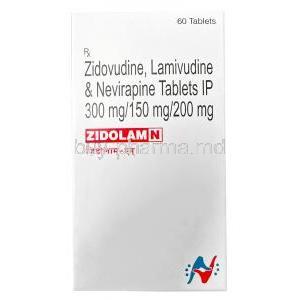Introduction to Nevimune (Nevirapine)
Nevimune, containing the active agent Nevirapine, is an antiretroviral medication classified as a Non-Nucleoside Reverse Transcriptase Inhibitor (NNRTI). It is an essential component in the management of HIV-1 infection, working to suppress viral replication and preserve immune function. This medication is widely used in combination antiretroviral therapy (ART) to improve life expectancy and reduce disease transmission.
Approved in the mid-1990s, Nevirapine was among the first NNRTIs introduced into global HIV treatment regimens. Over time, it has become available under multiple brand names such as Viramune, Nevimune, and others, manufactured by reputable pharmaceutical companies worldwide. Its inclusion in first-line ART regimens highlights its enduring therapeutic value.
When compared to other NNRTIs like Efavirenz and Delavirdine, Nevirapine exhibits a favorable safety profile for certain patient groups and demonstrates proven efficacy in reducing mother-to-child HIV transmission, especially in resource-limited settings.
Composition and Formulation
The active ingredient in Nevimune is Nevirapine, a potent non-nucleoside inhibitor targeting the HIV-1 reverse transcriptase enzyme. It is available in various strengths and dosage forms, such as:
- Tablets (typically 200 mg)
- Oral suspension for pediatric and adult patients unable to swallow tablets
Inactive components include lactose monohydrate, magnesium stearate, microcrystalline cellulose, and povidone, which ensure stability and proper absorption. Nevimune belongs to the pharmaceutical class of NNRTIs, which act by binding to a distinct site on the reverse transcriptase enzyme and preventing viral replication.
Mechanism of Action: How Nevimune Works
Nevimune functions by selectively binding to the HIV-1 reverse transcriptase enzyme, a critical catalyst in the viral life cycle responsible for converting viral RNA into DNA. This binding induces conformational changes that inhibit enzymatic activity, halting viral DNA synthesis.
By interrupting the RNA-to-DNA conversion process, Nevirapine reduces viral load and allows the immune system to recover. Over time, this results in increased CD4 cell counts and reduced susceptibility to opportunistic infections.
However, resistance may occur due to specific genetic mutations such as K103N and Y181C, which diminish drug binding efficacy. Pharmacokinetically, Nevirapine is well absorbed orally, extensively metabolized in the liver via CYP3A and CYP2B6 pathways, and exhibits a half-life that supports once or twice daily dosing.
Approved Uses of Nevimune
- Treatment of HIV-1 Infection: Used in adults and adolescents as part of combination ART to suppress viral replication.
- Prevention of Mother-to-Child Transmission (PMTCT): Administered to reduce the risk of vertical HIV transmission during childbirth.
- Post-Exposure Prophylaxis (PEP): In specific cases, Nevirapine may be included in regimens for healthcare workers or individuals after accidental exposure.
- Combination Therapy: Always used alongside other antiretrovirals (e.g., nucleoside analogues) to minimize resistance and maximize virologic suppression.
Off-Label Uses of Nevimune
Though its primary role is in HIV therapy, Nevirapine has been explored for additional potential benefits:
- Compassionate use in patients with resistant HIV strains.
- Adjunctive therapy in individuals with HIV-hepatitis co-infection for improved tolerance and liver enzyme balance.
- Prophylaxis in HIV-exposed infants shortly after birth.
- Experimental research into immune modulation and inflammation control.
Dosage and Administration
6.1 General Dosing Guidelines
The standard adult dosage typically begins with a 200 mg once-daily lead-in phase for 14 days to minimize the risk of rash. Thereafter, dosing is increased to 200 mg twice daily. Pediatric doses are calculated based on body weight or body surface area to ensure safety and efficacy.
6.2 Administration Instructions
- Administer orally, with or without food.
- Consistency in timing enhances plasma stability and treatment success.
- Strict adherence is vital to avoid resistance and treatment failure.
6.3 Dosage Adjustments
Patients with hepatic or renal impairment require individualized dosing or increased monitoring. Missed doses should be taken as soon as remembered, unless near the next scheduled dose. When switching from other NNRTIs or ART regimens, careful transition planning under medical supervision is necessary to prevent viral rebound.
Side Effects of Nevimune
7.1 Overview of Adverse Reactions
Adverse effects range from mild to severe and often appear during the first few weeks of therapy. They may be categorized as early-onset (e.g., rash) or late-onset (e.g., hepatotoxicity).
7.2 Common Side Effects
- Skin rash or itching
- Headache, dizziness, or fatigue
- Nausea, vomiting, or abdominal discomfort
- Mild increases in liver enzymes
7.3 Serious Adverse Effects
- Severe hepatic toxicity leading to hepatic failure
- Stevens-Johnson syndrome (SJS) and toxic epidermal necrolysis (TEN)
- Hypersensitivity reactions involving rash and systemic symptoms
- Hematologic alterations, such as anemia or neutropenia
Drug Interactions
Nevimune exhibits significant pharmacological interactions through hepatic enzyme modulation. It induces CYP3A and CYP2B6 enzymes, altering plasma concentrations of several co-administered drugs.
- Reduced efficacy when used with ketoconazole, rifampicin, or hormonal contraceptives.
- Altered plasma levels with other antiretrovirals like protease inhibitors.
- Concomitant use with alcohol or St. John’s Wort may exacerbate hepatic stress and reduce therapeutic efficacy.
Warnings and Important Precautions
- Hepatotoxicity: Regular liver function tests (LFTs) are mandatory.
- Rash Management: Discontinue immediately if severe skin reactions occur.
- Immune Reconstitution Syndrome: May unmask latent infections after ART initiation.
- Monotherapy Risk: Avoid single-drug use to prevent viral resistance.
- Monitoring: Regular assessment of CD4 count and viral load is essential.
- Alcohol Caution: Concurrent use can intensify liver injury risk.
Contraindications
- Known hypersensitivity to Nevirapine or formulation components.
- Moderate to severe hepatic impairment (Child-Pugh B or C).
- History of severe rash or hepatic failure during previous NNRTI therapy.
- Re-administration following life-threatening adverse reactions.
Strict medical evaluation is advised before initiation, ensuring safe incorporation into antiretroviral therapy plans.
Careful Administration
Careful administration of Nevimune (Nevirapine) is essential to minimize adverse outcomes and enhance therapeutic efficacy. Patients with underlying hepatic or renal dysfunction require tailored dosing and vigilant monitoring throughout treatment.
- Preexisting Liver Disease or Hepatitis B/C: Individuals with chronic liver conditions are at elevated risk for drug-induced hepatotoxicity. Periodic liver function testing, particularly during the initial 12 weeks of therapy, is recommended to detect early hepatic injury. Therapy discontinuation should be immediate if transaminase levels rise significantly or if jaundice, fatigue, or hepatomegaly develop.
- Renal Impairment: Although Nevirapine is primarily metabolized hepatically, renal excretion of metabolites necessitates dose adjustment in cases of severe renal impairment. Patients undergoing dialysis may experience altered plasma clearance, requiring additional clinical evaluation.
- Polypharmacy Considerations: Caution is warranted in patients receiving multiple antiretroviral or concomitant medications. Nevirapine’s enzyme-inducing effect on CYP3A and CYP2B6 can reduce plasma concentrations of co-administered drugs, such as antifungals or hormonal contraceptives. Comprehensive medication review helps mitigate drug interaction risks.
- Women with High CD4 Counts: Female patients with CD4 counts exceeding 250 cells/mm³ face a significantly higher incidence of hepatotoxic reactions. Baseline liver enzyme assessment and continuous clinical observation are imperative to ensure safe therapy initiation and continuation.
Administration in Special Populations
12.1 Administration to Elderly
In elderly patients, age-related physiological changes can influence the pharmacokinetics of Nevirapine. Reduced hepatic metabolism and renal clearance may result in higher systemic exposure. Hence, dosage adjustments may be necessary based on organ function assessments.
- Frequent monitoring of hepatic and renal parameters is vital to prevent accumulation and toxicity.
- Comorbid conditions and polypharmacy in geriatric populations necessitate individualized treatment strategies to avoid adverse interactions.
12.2 Administration to Pregnant Women
Nevimune has been extensively studied for its safety and efficacy in pregnancy, particularly for the prevention of vertical HIV transmission. Clinical data indicate that, when appropriately dosed, it reduces the risk of mother-to-child infection during labor and postpartum periods.
- Teratogenic effects are rare, though liver function should be closely monitored throughout pregnancy.
- Risk-benefit evaluation supports its inclusion in combination therapy for pregnant women, especially in low-resource settings.
- Its integration in PMTCT (Prevention of Mother-To-Child Transmission) programs has significantly reduced neonatal HIV incidence globally.
12.3 Administration to Nursing Mothers
Nevirapine is excreted into breast milk, and measurable concentrations may expose infants to the drug. While this exposure can confer some prophylactic benefit, there is also a risk of hypersensitivity or hepatic dysfunction in infants.
- According to WHO guidelines, HIV-positive mothers on ART can breastfeed if adherence to therapy is consistent and viral load remains suppressed.
- Infants should be monitored for rash, irritability, or jaundice during maternal therapy.
- Alternate feeding options may be advised if maternal viral suppression cannot be assured.
12.4 Administration to Children
In pediatric populations, Nevimune is prescribed using body weight or surface area to ensure precise dosing. Its liquid suspension form provides an adaptable option for infants and young children.
- Pediatric regimens are typically divided into twice-daily administrations for consistent plasma levels.
- Clinical studies confirm efficacy and safety in children, including neonates exposed to maternal HIV.
- Monitoring for rash, fever, or hepatic enzyme elevation is essential during the initial weeks of therapy.
Overdosage and Toxicity Management
An overdose of Nevimune can precipitate a spectrum of symptoms ranging from mild to severe systemic manifestations.
- Symptoms: Nausea, vomiting, dizziness, headache, rash, and signs of hepatic injury are common indicators of toxicity.
- Hepatotoxicity: Elevated liver enzymes and jaundice may develop rapidly following substantial overdose.
- Management: Supportive care is the cornerstone of treatment, including hydration, symptomatic relief, and close clinical monitoring.
- Activated Charcoal: May be administered promptly to reduce systemic absorption if ingestion is recent.
- Hemodialysis: Limited benefit due to high protein binding, but may assist in removing metabolites in severe renal impairment.
Handling and Storage
Proper storage and handling of Nevimune ensure medication potency and safety.
- Store at a controlled room temperature between 15°C and 30°C.
- Protect from moisture, heat, and direct light exposure.
- Keep the medication out of reach of children and pets.
- Healthcare professionals should follow standard safety protocols when dispensing or disposing of expired tablets.
- Unused or expired medication should be disposed of following local pharmaceutical waste regulations.
Clinical Pharmacology and Research Insights
Nevimune exhibits predictable pharmacokinetic characteristics essential for sustained viral suppression.
- Absorption: Rapidly absorbed after oral administration, with bioavailability exceeding 90%.
- Distribution: Extensively distributed across body fluids and tissues, including placental and cerebrospinal compartments.
- Metabolism: Predominantly metabolized in the liver by CYP3A4 and CYP2B6 isoenzymes.
- Excretion: Eliminated mainly via urine as inactive metabolites.
Clinical trials demonstrate robust efficacy and tolerability, confirming its pivotal role in first-line HIV therapy. Long-term studies reveal sustained viral suppression and manageable resistance patterns. Pharmacogenetic research further highlights variability in metabolism due to CYP450 polymorphisms, influencing dosing considerations across populations.
Patient Counseling Information
Comprehensive patient education is vital to ensure adherence and mitigate adverse effects.
- Adherence: Missing doses increases resistance risk; strict compliance is imperative.
- Warning Signs: Report any rash, jaundice, abdominal pain, or fatigue promptly.
- Contraceptive Guidance: Use alternative non-hormonal methods as Nevirapine may reduce hormonal contraceptive efficacy.
- Dietary Advice: Maintain adequate hydration and avoid excessive alcohol intake to support hepatic function.
- Monitoring: Regular follow-up for viral load, liver enzymes, and CD4 counts ensures continued therapeutic success.
Summary and Key Takeaways
Nevimune (Nevirapine) remains a cornerstone in HIV therapy, valued for its potent antiviral efficacy and established safety profile. Its contributions to global HIV management—particularly in preventing mother-to-child transmission—are unparalleled. Though hepatotoxicity and rash are notable risks, these can be effectively managed through vigilance and individualized treatment approaches. When administered responsibly and monitored closely, Nevimune supports sustained viral suppression and improved quality of life for individuals living with HIV worldwide.

